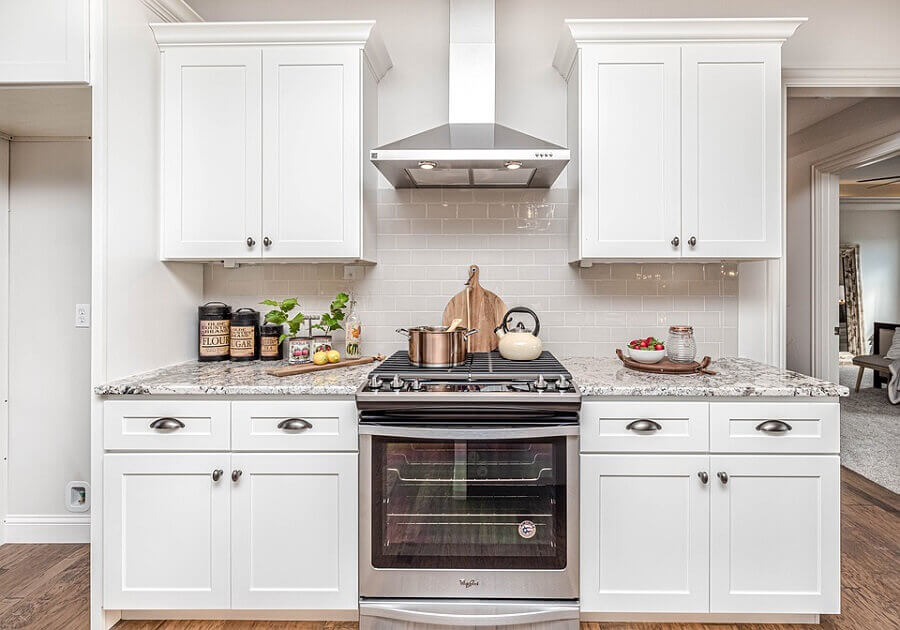Proper stove and oven maintenance lead to stove and oven longevity. However, a lot of households feel overwhelmed by stove maintenance. But don’t panic; there are easy methods through which you’ll get a clean and wear-free stove. Read on the blog to learn six tips for stove maintenance.
- Proper and Frequent Cleaning
Let’s face it – cooking spills are unavoidable. But fortunately, we can sweep off immediately. Apparently, nearly everyone is aware of the fundamentals of stove cleaning. Post-meal preparations, you ought to wait for the stove to cool down. After that, wipe down the spills with a cleaning solution every day. In case of spills or drips over your stove, score them out immediately when they happen. All these actions will fend off a large amount of mess and eliminate hours of unnecessary scrubbing.
Further, rub the sticky substances and grate from the stove surface at least once a week instead of accumulating them. Then every month or two times a year, dismantle the stove parts and deep clean every component. If needed, call in professionals for stove repairs.
- Use Vinegar and Dish Soap
Specialists advise avoiding appointing abrasive cleaners to wipe up the stovetop spills immediately. Instead, they highly suggest employing vinegar and dish soap for cleaning your stovetop. Vinegar is referred to as a moderate and non-harmful acid. And dish soap is considered a strong base.
On the other hand, abrasive solutions encompass chemical substances, which could harm the stovetop. Most likely, it will damage the gas components, corrode the surface or spread poison inside your house. Therefore, use vinegar or dish soap (whichever you prefer) blending with hot water to clean the stovetop.
- Keep Burner Channels Clean
The burners, sitting lavishly on the gas cooktop, shall be cleaned. Failure to do so will not distribute the gas evenly. Underneath the burner cap, there’s a small maze of metal channels. They furnish the gas to navigate into the ring and under your pan or pots. However, if these metal channels get blocked, the gas won’t be emitted evenly for cooking.
Hence, clean the burner channels with a pipe cleaner or straw cleaner. They are specifically designed to cleanse the tiny metal channels without hassle. However, avoid employing a kebab stick, toothpick or any sharp instruments to clean them. This may break off the wood, which can land you in trouble.
- Soak Burners and Burner Caps
The ideal way to begin cleaning the burner channels is to soak burners and burner caps regularly. By this, we mean daily. That too with burner caps. The best way to do this is soaking them in vinegar and soapy water, though not on the same day. That way, you can disperse the unpleasant substance from it that’s preventing your burner from evenly distributing the gas.
Well, the process is simple. Take out the burner cap and burner and place them in the sink. Allow them to soak for a while (approximately 10-30 minutes). After that, use the toothbrush or pipe cleaner to remove the grease and dirt. The soaking process will easily allow you to scrub off the crud.
- Prevent Boil Overs
The splatter of food while cooking can prevent your cooktop from living long. Therefore, designate pots and pans which have a deep body; that will preclude boilovers and splattering. That way, you can reduce your cleaning work and improve your gas stove’s lifespan.
- Clean Oven Window
Typically, oven windows have a tendency to grime over time, regardless of whether you've cooked or not. The build-up dirt on the window worsens the overall performance of the stove. It’s due to the fact that you open and close the door to test the food.
Therefore, keep them clear. For that, take a moist cloth, dip in a baking soda and rub it. If you’ve really baked, then employ ammonia, allow it to sit for 30 minutes and rub with a plastic ice scraper. Not to forget, skimp on a metal tool.
Now that you’ve learned the six tips for stove maintenance, make sure you make it a habit. Additionally, if you observe any signs of stove repairs, then have a professional fix it. Trying to DIY can worsen the condition of your stove.
How to Renovate a Small Kitchen?







